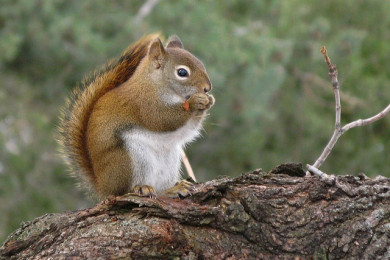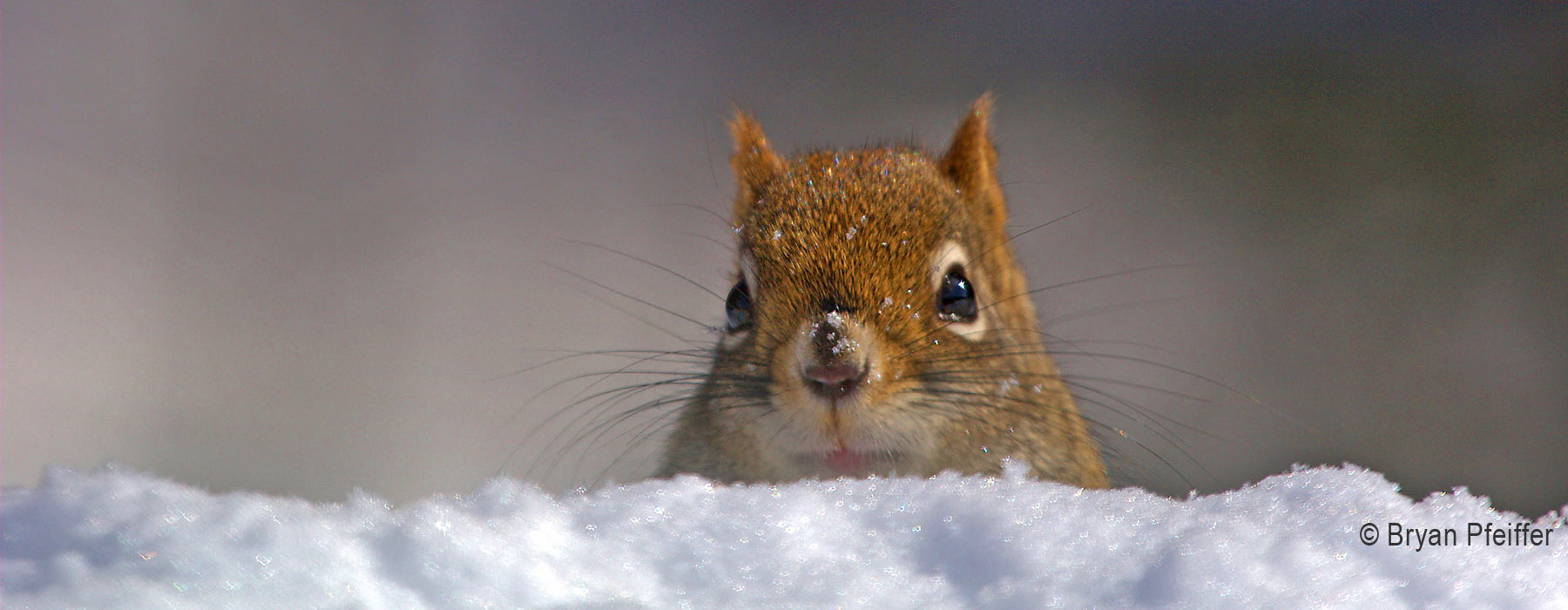Walking through an otherwise quiet forest, the resounding chatter of a Red Squirrel may insistently inform you that you are “invading” its territory.
Red Squirrels are one of the smallest tree squirrels in North America, weighing between 200-250 grams. As its name suggests, this squirrel has reddish fur with a white underbelly and whitish rings around its eyes.

Red Squirrels are common avian nest predators; Mountain Birdwatch tracks bird and predator population cycles. © Gilles Gonthier
Unlike the majority of mammals, Red Squirrels are diurnal, with peaks of activity in the early morning and late afternoon. These animals nest in tree branches or tree cavities; each individual has several nests, and females often move their offspring between nests. Survivorship of juveniles is low, with approximately 22% of squirrels surviving their first year. Red Squirrel predators include several species of raptors, gray foxes, bobcats, coyotes, and weasels.
FUN FACTS
- Red Squirrels create caches of food, known as “middens,” in late summer and early fall. Middens consist of large piles of shredded cones and stems under trees, with green cones in the middle.
- Its frequent noisy chatter is the basis for one of its common monikers, the “Chickaree.”
- While Red Squirrel diets consist mostly of conifer seeds, they are opportunistic feeders, also incorporating mushrooms, berries, and bird eggs and nestlings into their diet. Squirrels may clip mushrooms and place them on tree branches for drying.
- Red Squirrels enjoy maple syrup by “tapping” maple trees by biting into the bark to release sap, returning later to consume the concen- trated “syrup” once some of the water has evaporated.
- They are active year-round, and in winter they often travel in tunnels under the snow.
WHY WE STUDY THEM
The Red Squirrel is abundant and of little conservation concern throughout most of its range. However, since the conifers on which they feed produce seeds in approximately 3-5 year cycles, squirrel populations fluctuate in response to these seed and cone production cycles. When their target food sources produce a large “cone mast,” squirrel populations increase. Since squirrels are also important avian nest predators, when squirrel abundance is high, nestling survivorship may be low for several songbirds within the squirrel’s range. In montane forests of the North- east, prey items include eggs and nestlings of the Bicknell’s Thrush, a species of high conservation concern.
Volunteers with VCE’s Mountain Birdwatch and Forest Bird Monitoring projects survey Red Squirrel populations across the northeastern United States to further document and understand its connection with bird populations.
HOW YOU CAN HELP
Become a Mountain Birdwatch volunteer and help VCE document Red Squirrel and songbird distribution and abun- dance while enjoying some of the best mountaintop views in the Northeast.

